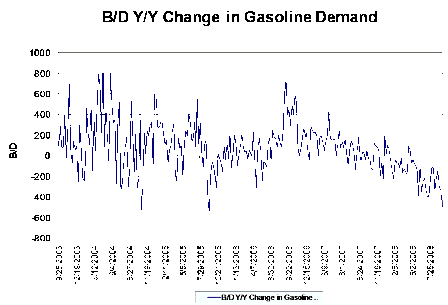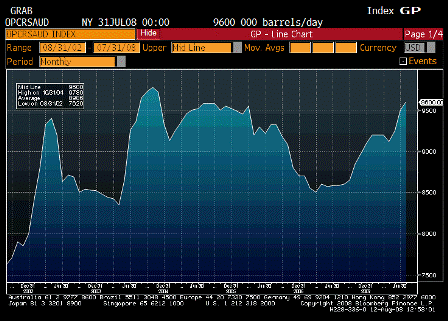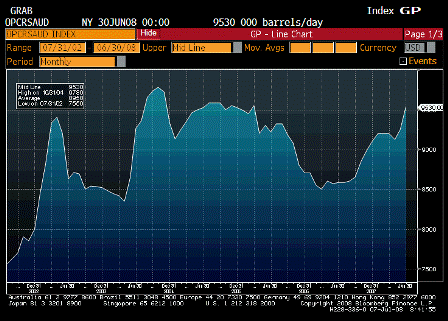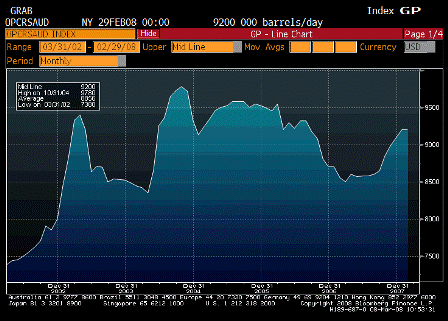The Saudis don’t sell in the spot markets, they only post prices to refiners and then take orders at those prices.
That is, they post price and let quantity vary.
So the only way they could definitively get to 10 million bpd would be to change policy and sell in the spot market, which would let loose a downward price spiral until some other producer decided to cut production to stop the fall.
As always, it’s their political decision, and no telling what they might actually do.
Saudi Shows Who’s Boss, to Pump 10 Million Barrels Per Day
June 10 (Reuters) — Saudi Arabia will raise output to 10 million barrels day in July, Saudi newspaper al-Hayat reported on Friday, as Riyadh goes it alone in unilaterally pumping more outside OPEC policy.
Citing OPEC and industry officials, the newspaper said output would rise from 8.8 million bpd in May. There was no immediate independent verification of the story.
The report suggests Riyadh is asserting its authority over fellow members of the Organization of the Petroleum Exporting Countries after it failed to convince the 12-member cartel to lift output at an acrimonious meeting in Vienna on Wednesday.
“The Saudi intention is to show that they cannot be pushed around,” said Middle East energy analyst Sam Ciszuk at IHS. “Either OPEC follows the Saudi lead or they will have problems.”
A proposal by Saudi and its Gulf Arab allies the UAE and Kuwait to lift OPEC production was blocked by seven producers including Iran, Venezuela and Algeria.
The two sides blamed each other for the breakdown in talks. Saudi Oil Minister Ali ali-Naimi called those opposed to the deal obstinate. Iran’s OPEC governor Mohammad Ali Khatibi responded by saying Riyadh had been overly-influenced by U.S.-led consumer country demands for cheaper fuel.
“The hawks in OPEC called their bluff and now it is up to Riyadh to show that they were not bluffing — that they will go ahead unilaterally if pushed,” said Cizsuk.
Saudi Arabia has not pumped 10 million bpd for at least a decade, according to Reuters data, production having peaked at 9.7 million bpd in July 2008 after prices hit a record $147 a barrel. It is the only oil producer inside or outside OPEC with any significant spare capacity.
Asked in Vienna on Thursday whether Saudi would reach 10 million bpd Naimi said: “Just send the customers, don’t worry about the volumes.”
Gulf delegates said Riyadh was planning to pump an average 9.5-9.7 million bpd in June.
Saudi is already offering more crude to refiners in Asia, which, led by China, is driving a global rise in oil consumption.
Forecasts from OPEC headquarters show demand will increase about 1.7 million bpd in the second half of the year from recent cartel output of about 29 million bpd.
Brent crude rose to a 5-week high of $120 a barrel after the OPEC talks broke down. Prices eased after Friday’s Saudi news, last dipping 63 cents to trade near $118.94 a barrel.






